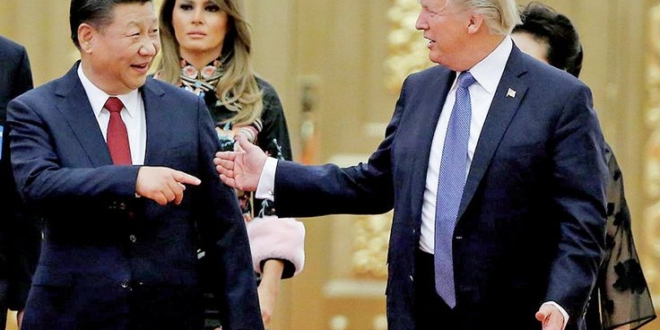
BLOOMBERG
Even before being elected, President Donald Trump, here with President Xi Jinping, promised to revisit trade deals with China.
A blow-by-blow account of the U.S.-China fight over imports
June 2016: During a campaign rally, presumptive Republican presidential nominee Donald Trump decries U.S.-China trade relations and vows to revisit existing agreements.
March 2017: Trump, now U.S. president, calls for tighter tariff enforcement and a review of U.S. trade deficits.
April 2017: Trump meets with Chinese President Xi Jinping for the 1st time and agrees to a 100-day plan for trade talks.
July 2017: After 100 days, the U.S. and China fail to agree on a plan to reduce the U.S. trade deficit with China.
March 2018: Trump orders 25% tariffs on imported steel and 10% on aluminum, affecting auto suppliers and material exporters to the U.S.
April 2018: China imposes tariffs of up to 25% on more than 125 U.S. products, including automotive. Trump unveils plan for 25% tariffs on $50 billion of Chinese imports, including automotive products. China responds with retaliatory tariffs on $50 billion in U.S. imports, including auto parts.
July 2018: The U.S. begins collecting tariffs on several hundred Chinese products worth several billion dollars. China takes retaliatory measures and imposes tariffs on several hundred goods from the U.S., including automobiles.
August 2018: The U.S. and China each threaten new rounds of tariffs on several billion dollars of additional imports. The U.S. orders July tariffs on $16 billion of Chinese goods to increase to 25%. China retaliates with 25% duties on $16 billion of U.S. goods.
September 2018: The U.S. implements tariffs on $200 billion worth of Chinese goods with an initial rate of 10%, to be increased to 25% at the start of the new year. China responds by implementing tariffs on $60 billion worth of U.S. goods.
December 2018: The U.S. and China agree to a 90-day halt to new tariffs. China announces it will temporarily remove additional 25% tariffs on U.S. autos and 5% tariffs on certain U.S. auto parts for 3 months starting Jan. 1. U.S. auto imports would be subject to China’s standard 15% tariff rate on foreign autos during this time.
April-May 2019: U.S. and Chinese negotiators hold talks in Beijing and draft an agreement. In May, Beijing backtracks.
June 2019: Trump and Xi agree to revisit trade talks.
Summer 2019: Trump threatens various additional tariffs. China suspends new U.S. agricultural product purchases. U.S. delays tariffs on certain products.
August 2019: China says it will impose new tariffs by year end on $75 billion worth of U.S. goods, including vehicles, in retaliation for duties the Trump administration threatened on Chinese goods. China also says it will reintroduce a separate 25% tariff on vehicle imports on Dec. 15.
October 2019: U.S. delays tariff increase for Chinese goods.
November 2019: Automakers await a decision from the Trump administration on whether it would impose up to 25% tariffs on U.S. light-vehicle and auto part imports after a 180-day review period elapses.
December 2019: U.S. and China agree to phase 1 deal just before a new tariff hike largely related to consumer goods. China releases 2nd set of U.S. products to be exempt from additional tariffs.
Jan. 15, 2020: The U.S. and China sign phase 1 trade deal.
May 2020: China announces 5th list of U.S. items exempt from Chinese tariffs.
— Alexa St. John
